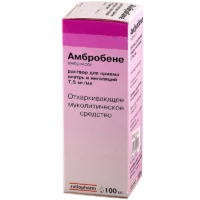Description
Amkesol (Ambroxol Hydrochloride) Tablets
Composition
Active ingredient: Ambroxol hydrochloride
Mechanism of Action
Ambroxol hydrochloride, the active ingredient in Amkesol tablets, is a mucolytic agent that thins and loosens mucus in the airways. This action facilitates easier expectoration of mucus through coughing.
Pharmacological Properties
Amkesol tablets contain ambroxol hydrochloride, which acts by increasing the production of pulmonary surfactant, stimulating mucus secretion, and enhancing ciliary function in the respiratory tract.
Indications for Use
Amkesol tablets are indicated for the treatment of respiratory conditions characterized by excessive mucus production, including acute and chronic bronchitis, asthma, and bronchiectasis.
Contraindications
Avoid using Amkesol tablets if you have a known allergy to ambroxol hydrochloride or any other components of the product. Consult a healthcare provider before use if you are pregnant, breastfeeding, or have a history of gastric ulcers.
Side Effects
Common side effects of Amkesol tablets may include nausea, vomiting, and gastrointestinal disturbances. Serious adverse reactions are uncommon but should be reported to a healthcare professional promptly.
Usage Instructions
Adults and Children over 12 years: Take 1 tablet three times a day.
Children 6-12 years: Take half a tablet three times a day.
Swallow the tablets whole with a glass of water. Do not crush or chew the tablets. Adhere to the prescribed dosage recommended by your healthcare provider.
Benefits Compared to Analogues
Amkesol tablets offer effective mucus clearance and symptom relief in respiratory conditions, distinguishing themselves from other products in the mucolytic class.
Suitable Patient Groups
Amkesol tablets are suitable for adults, children over 6 years, and elderly patients experiencing respiratory conditions associated with excessive mucus secretion.
Storage and Shelf Life
Store Amkesol tablets in a cool, dry place away from direct sunlight. Check the expiration date on the packaging and do not use the product beyond the specified shelf life.
Packaging Description
Amkesol tablets are available in a pack containing 20 tablets. The packaging is designed to ensure the integrity and stability of the product.
Clinical Evidence and Proven Effectiveness
Ambroxol hydrochloride has demonstrated efficacy in reducing mucus viscosity, enhancing mucociliary clearance, and decreasing cough frequency in patients with respiratory conditions. Clinical studies support the effectiveness of ambroxol in improving respiratory symptoms.





